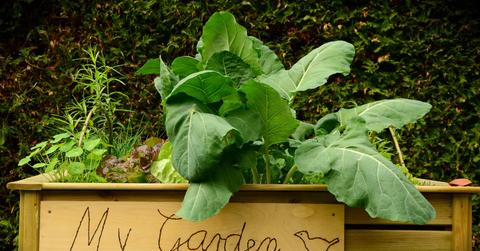The Lazy Gardener's Maintenance-Free Vegetable Growing Guide
Gardens can feel intimidating, but with proper planning, patience, and commitment to just a few minutes of maintenance per day, anyone can develop a green thumb that's good for their health and good for the planet.
Updated May 26 2019, 8:11 p.m. ET
Gardens don’t have to mean huge time commitments and expert-level gardening know-how. When I moved out of New York City eight years ago to start a farm, I’d only ever helped my mother grow tomatoes and basil at her place in Jersey, volunteered at a handful of city community gardens, and had attempted spinach on my Brooklyn windowsill. I had zero abilities as a gardener, and no idea where to begin.
Luckily for me, and for anyone else just getting their toes wet, with a little common sense and proper planning, you can have an extremely successful vegetable garden that will feed you and your families or friends all season long. Here’s easy to follow advice for designing a vegetable plot that won’t break your back, wallet, or zen-like disposition this summer.
Elevate your space.
Instead of bothering with clearing out a big garden plot, think containers or raised beds. Root crops will grow better in raised beds, you’ll have less ground to cover, and you can start plants earlier in the season because the containers and beds will be slightly warmer than ground temperatures.
Smaller areas mean no pathways to weed, fewer pests to contend with, and no need for special tools or materials. You can make raised beds out of pallets, untreated scraps of wood, cinder blocks, logs, or even stones.
Grow small.
Don’t be afraid to start (very) small. You can start with just a few things in a couple containers. Your first year of gardening doesn’t require 30 different vegetables.
Make a plan.
There’s been much buzz in recent years over square-foot gardening. This is the practice of splitting a growing area (such as a raised bed) into square sections that are 12 inches by 12 inches, allowing for intensive planting that maximizes the use of gardening space.
If you’d like to utilize raised beds, spend 10 minutes mapping out a square-foot garden map on a piece of paper, clearly marking where each plant you’d like to grow will live. This will save confusion later on, allow you to make the most use of your grow bed, help when it comes time to rotate your crops in subsequent years, and serve as a great guide for plant identification as things are starting to come in.
Weed less, cover more.
The most time-consuming element of gardening is weeding, hands down. But what if there was an alternative? In the winter and early spring, you can use black plastic sheets over your raised beds or containers to kill weeds, and just poke holes in the plastic where your plants will go. You will likely never have to weed.
You can also surround plants with a cover of hay, which will biodegrade and help to nourish the soil while providing moisture retention. In other words, fewer weeds and less need for irrigation. Win-win.
Cardboard is another great (and biodegradable) weed barrier that you can poke holes through where you want plants to grow. If you feel the cardboard is unsightly, you can always cover it with mulch and no one will ever know.
Grow easy.
The best advice I can give to any gardener starting out is to grow what you eat, and to focus on plants that grow easily and prolifically so you don’t get discouraged your first time out of the gate. Garlic, onions, tomatoes, salad greens like lettuce and kale, squashes like zucchini and butternut, radishes, peas, and beets are all incredibly simple to grow and will provide you with tons of food.
If you notice any leaves being chewed by bugs, just mix up a solution of hot sauce and water, and spray the leaves. When you wander by the plants and notice a weed, pull it out. General, simple maintenance means never having to spend a full day dealing with weeds, or discovering your work has been decimated by a pack of errant squash bugs.
Try, try again.
Any great gardener will tell you: The more you do, the less you know. The weather changes every season, and some years the same plant that did so well the season before will be a disaster this time around.
Gardening is a study in mindfulness, meditation, and patience. Keep a journal of what’s working, what isn’t, and check out gardening blogs and groups online to share your confusions and questions—gardeners love troubleshooting together! With careful planning, general maintenance, and a few notes to track your progress, once set up, your gardening hobby will require fewer than five minutes of your time a day. From there, when you inevitably fall in love, any additional time you spend will be of your own volition.
